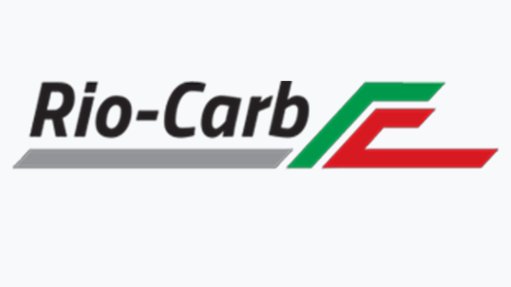IAEA launches initiative highlighting nuclear power’s role in mitigating climate change
The International Atomic Energy Agency (IAEA), an autonomous specialised agency of the United Nations, has launched a new initiative to help countries understand the role nuclear energy can play in reducing their carbon emissions. The initiative, Atoms4NetZero, was announced by IAEA director-general Rafael Mariano Grossi at the COP27 Climate Summit, in Sharm El Sheikh, Egypt. COP27 was the first Climate Summit at which the IAEA had a pavilion, named the Atoms4Climate pavilion.
“Nuclear energy is 25% of global low-carbon power already,” he highlighted in his post-COP27-attendance address to the IAEA board of governors, in Vienna, Austria. “It has a long, proven record and enormous potential. But the magnitude of nuclear’s ability to mitigate greenhouse-gas emissions is not fully understood by individual countries and regions. This is a barrier to uptake. [The] Atoms4NetZero initiative, which I announced at COP, aims to change that. Through the initiative, we will work in partnership with our Member States to model and measure the contribution of nuclear power to their net zero energy transitions. Atoms4NetZero will help countries assess the potential of nuclear to be used beyond the grid – for example, to produce hydrogen or for desalination – whether through traditional large nuclear power plants, or through newer nuclear technologies, such as SMRs [small modular reactors]. I encourage every one of our Member States to participate in Atoms4NetZero.”
He noted that many IAEA member countries already recognised the benefits of nuclear power: its energy density, its proven status and its low-carbon nature. He pointed out that today there were 423 operating nuclear power reactors, in 32 countries. These had a total installed capacity of some 379 GW and were responsible for 10% of the total global electricity supply. About 57 nuclear reactors were currently being built in 18 countries, which would provide additional capacity of around 59 GW.
Further, SMRs were “eagerly” awaited by the market, Grossi stated. The IAEA, through its Nuclear Harmonisation and Standardisation Initiative (NHSI), aimed to facilitate the safe and efficient deployment of this new nuclear technology. The NHSI industry and regulatory ‘tracks’ had already been set up and were now operating. Their working groups had agreed on their work plans. Indeed, six of the seven work groups had already started their work, while the seventh would start next month.
The IAEA was also assisting member countries to extend the lives of their existing nuclear reactors, not least because they were among the lowest cost sources of low-carbon electricity. As part of this, the agency was also helping member countries to recruit and train new personnel for their nuclear workforces. In particular, the IAEA was seeking to increase the number of women active in the sector, through, for example, scholarships for master’s degree studies in nuclear subjects, offered under the Marie Skłodowska-Curie Fellowship programme (launched in 2020). And this year the IAEA had also launched its Lise Meitner Programme, which would offer women, who were early in their careers, multi-week specialised training at nuclear facilities.
“As countries grapple with climate change and energy insecurity, interest in nuclear power is growing, and public acceptance too,” he affirmed. “Even in places where it was a taboo subject, nuclear is again part of the conversation. … It is clear the world needs more low-carbon electricity and that nuclear energy can provide more.”
Article Enquiry
Email Article
Save Article
Feedback
To advertise email advertising@creamermedia.co.za or click here
Comments
Press Office
Announcements
What's On
Subscribe to improve your user experience...
Option 1 (equivalent of R125 a month):
Receive a weekly copy of Creamer Media's Engineering News & Mining Weekly magazine
(print copy for those in South Africa and e-magazine for those outside of South Africa)
Receive daily email newsletters
Access to full search results
Access archive of magazine back copies
Access to Projects in Progress
Access to ONE Research Report of your choice in PDF format
Option 2 (equivalent of R375 a month):
All benefits from Option 1
PLUS
Access to Creamer Media's Research Channel Africa for ALL Research Reports, in PDF format, on various industrial and mining sectors
including Electricity; Water; Energy Transition; Hydrogen; Roads, Rail and Ports; Coal; Gold; Platinum; Battery Metals; etc.
Already a subscriber?
Forgotten your password?
Receive weekly copy of Creamer Media's Engineering News & Mining Weekly magazine (print copy for those in South Africa and e-magazine for those outside of South Africa)
➕
Recieve daily email newsletters
➕
Access to full search results
➕
Access archive of magazine back copies
➕
Access to Projects in Progress
➕
Access to ONE Research Report of your choice in PDF format
RESEARCH CHANNEL AFRICA
R4500 (equivalent of R375 a month)
SUBSCRIBEAll benefits from Option 1
➕
Access to Creamer Media's Research Channel Africa for ALL Research Reports on various industrial and mining sectors, in PDF format, including on:
Electricity
➕
Water
➕
Energy Transition
➕
Hydrogen
➕
Roads, Rail and Ports
➕
Coal
➕
Gold
➕
Platinum
➕
Battery Metals
➕
etc.
Receive all benefits from Option 1 or Option 2 delivered to numerous people at your company
➕
Multiple User names and Passwords for simultaneous log-ins
➕
Intranet integration access to all in your organisation














